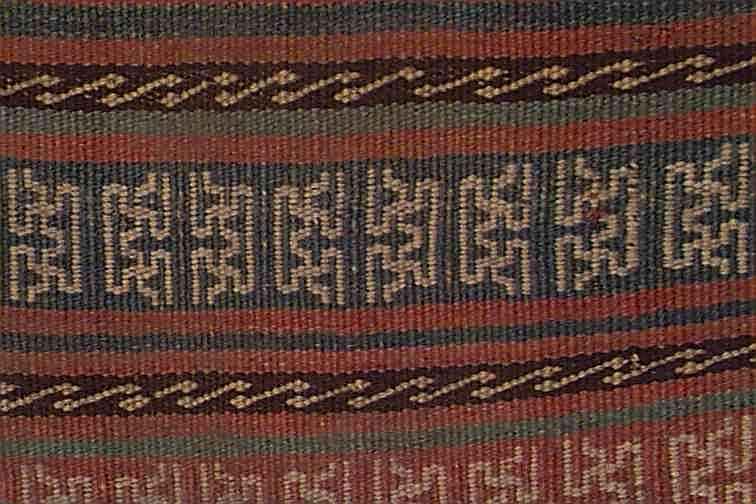Ken took me by surprise. He talked about a fragment with a repetitive design. Oeps! I have one, and I like it a lot. I'm so very human! I'm not sure about its origine. It's all wool. Warp: S3Z brown/white. Weft: S2Z continues along the back. Sides: Not original.


Caucasian? Turkman/Uzbek? I did some text and pictures from H.M. Raphaelian's book "The hidden language of symbols in oriëntal rugs" 1955. Just a nice book. His explanation puts the Chinees story in. We allways seem to forget, to give the Chinees their proper place in rug design history. That's why I like it so much. Raphaelian makes up a story, and 40 years later I have the original? Maybe Raphaelian made it? I'm allways curious about what people see in the design. I saw the cross first, and a friend saw the swastika first. Now I see the swastika first, and my friend the cross. What you see is what you get/are.
With kind regards, Vincent Keers



